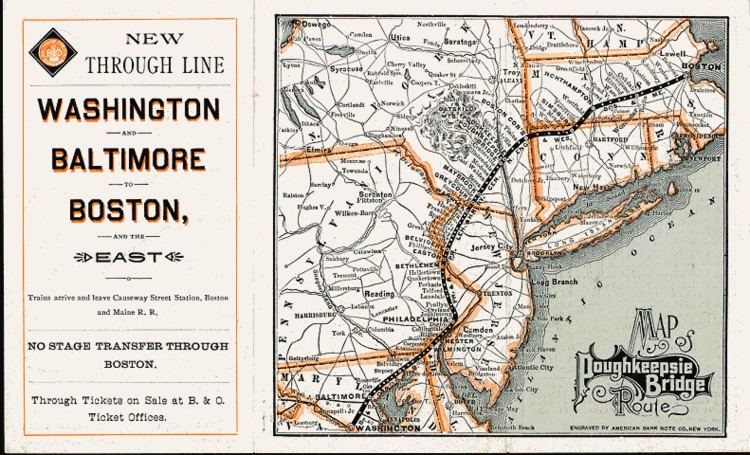 | ||
The Poughkeepsie Bridge Route was a passenger train route from Washington, D.C. to Boston, Massachusetts, via Baltimore, Maryland and Philadelphia, Pennsylvania.
The route specifically avoided the Port of New York, due to the lack of a rail crossing of North River (Hudson River). Instead it passed over the Poughkeepsie Bridge at Poughkeepsie, New York. Its Boston terminus at North Station, an advantage allowing for a direct transfer to Boston and Maine Railroad lines to the north.
The Federal Express later used a similar route for several years in the 1910s, but ran via Trenton, New Jersey and New Haven, Connecticut.
The route used the following companies' lines:
The route was used only from 1890 to 1893, after which operating patterns changed. The closure of the bridge to rail traffic after a 1974 fire eliminated the route and created the Selkirk hurdle.
Parts of the route near the Poughkeepsie Bridge over the Hudson River have been converted to rail trails; the Hudson Valley Rail Trail to the west, the Poughkeepsie Bridge itself, and the Dutchess Rail Trail to the east.
